The United States Of America | Joseph Byrd | Interview
Joseph Byrd is a composer, arranger, multi-instrumentalist, sound designer. His music career began very early in the 60’s. He later formed The United States Of America and The Field Hippies and released two albums with these groups.
He always had a great vision, seen on the albums, which have futuristic sounds and highly interesting arrangements.
“Don’t try to break the rules before you learn the rules”
You were born in Louisville, Kentucky and raised in Tucson, Arizona.
Joseph Byrd: Kentucky I remember as a verdant beautiful place. Briefly we lived in a country house and I had a pony! But my father’s relentless driven entrepreneurship doomed him after I was born, and he went from one disaster to another. We moved to Tucson because of the war, and he managed to purchase a mine near the Mexican border (you could only sell ore to the government, but he went 4 years without payment, and afterward had to sue, as the government said they’d never “ordered” the ore, so didn’t have to pay for it). I hated Tucson. It was dry, hot, and everything was the color of sand. I endured it till graduating U of A, left for Stanford, and never came back.
My influence was jazz. Ellington first, then Kenton, then the West Coast jazz that was held in contempt by “serious” jazz musicians. I did my first arrangements and started my first band, The Debonaires, I played accordion and vibes, we had a trumpet, guitar, bass/lead singer, and drums, and got a local TV show, so we got gigs. I was 15, so I couldn’t drive yet. We played the awful pop music that was on the radio. In college I had a jazz quartet, vibes, baritone sax, bass, and drums, and played Mulligan charts and some of my first composing efforts. But it was in college that I got to study with my first important composition teacher, Barney Childs. He was very old school, yet modernist, and he forced me to be disciplined. He was an English professor, not Music, though he had a Ph.D. in both. I was very much under his spell, and he helped me get a teaching assistantship at Stanford. That was the most dramatic change in my entire life. The collegial atmosphere was so cool I later decided to get a Ph.D. from UCLA, which was entirely different, and mostly stocked with conservative/reactionary professors. They (literally) conspired to deny me the degree, in large part because of my formation (with avant-garde trumpeter/composer Don Ellis) of The New Music Workshop, where I brought the FLUXUS modernity of performance art, concept music, electronic sound, and experimentalism to the West Coast.
You attended University of Arizona and won a fellowship to get an M.A. at Stanford. You moved to New York and became part of the FLUXUS experiments that were emerging at that time.
It would take too long to give a history of FLUXUS, but my contributions were many, including “loops” of live instruments (Terry Riley’s In C), sound-poems, the first combining of live and electronic sound (Water Music, 1963, commissioned by Max Neuhaus), the beginnings of mixing performance art and music…. I studied with Morton Feldman first, and his influence can be heard in the new CD: the avoidance of “polyphony” and the use of sounds dropped into silence. Incidentally, two of the new CD’s pieces were reviewed by the Times, but I’d left NY before that concert.
In the Fall of 1960 I arrived in New York City. I was 22, armed with a B.A. (The University of Arizona) and an M.A. (Stanford), and I’d come to study with John Cage. New York in the early 60s was intoxicating There was every kind of artistic activity imaginable: on any given night you might choose between say, the Juilliard String Quartet, the Paul Taylor Dance Troupe, Zero Mostel in Rhinoceros, medieval chansons by The New York Pro Musica Antigua, the “New Forms-New Media” show at the Martha Jackson Gallery, or a Messiaen organ recital. The city teemed with young artists and writers, musicians and dancers, and there was a sense of being “on the axis of the wheel of life.” It was a great time and place to be young and poor and talented. At Stanford, I’d come under the influence of a group of Berkeley composers – notably LaMonte Young, Steve Reich, and Terry Riley – who were moving dangerously into the deep waters of the avant-garde. Noise was in the air. “We must let sounds be what they are,” wrote LaMonte. In New York, we were all subsumed into a protean energy – less a school of composition than an attitude: we were redefining art itself.
My time in NY was central to my development. It was the second step in my education, after Stanford, which introduced me to the idea of a “community of scholars” and gave me my first insights into the development of modern music…chiefly my single course in “Modern Harmony”, which began with Chopin’s preludes and never left the subject! It was there that I first became aware of Cage and the first school of his disciples, and there that I began to list toward more and more radical concepts in my own music.
“Memories from living in New York” is hopelessly large. For example, here are a handful of things, in no particular order:
– Going into a ‘Spanish/Mexican” restaurant on 14th St. and discovering they had no clue about Mexican food, had not even thought of anything beyond the claim; in fact, in 1960 there was no Mexican food in NY, and I had to learn how to cook it, buying tortillas in a can (!) at a 14th St. market.
– Passing by a brownstone on the upper West Side and seeing a sign in a basement window that read “New York Pro Musica Antigua”, which was my favorite group, with Russell Oberlin and Charles Bressler as countertenors; I dropped in and learned that Noah Greenberg had a regular Wednesday night session where musicologists came and sightread from manuscripts just in from Europe – in individual parts with C clefs and F clefs on virtually any line of the staff. I was always a superb sight-singer, but this was a huge challenge. I met my first girlfriend in that group, Charlotte Greenspan.
– After a huge snowstorm, making my painfully slow way to the subway in Brooklyn Heights, just two blocks away, but taking 20 minutes, getting to NYPL in time for work, only to learn that the library was closed because no one else had managed to come in. It was on that same train, earlier on, that I met the legendary Moondog, a blind 6’8” giant in full Viking regalia, carrying a huge spear ( 4” diameter). I’d known of him through an obscure CD of children’s music he made with an unknown singer named Julie Andrews, just voice and percussion, with his own odd assemblage of instruments and his very arcane and obscure lyrics…a 10” LP. Since I knew him at once, I said hello, and he turned out to be a lovely, gentleman who was touched that someone had actually bought the record. I would see him thereafter fairly often, standing at the corner of 6th Avenue and 52nd St., spear in hand, no matter what the weather. He was not a busker, did not accept money, he just…stood there all day.
– The ubiquitous blue and yellow Sabrettes hot dog carts, their aroma enticing, a bun shorter than the sausage it held, with mustard and sauerkraut, one of the most addictive foods I knew. And at the other extreme, the curry joints in Harlem. In between, there was every kind of food imaginable. When I went to work for Virgil Thomson, I learned about French cooking, and acquired a vocabulary of tastes.
– Working for Mr. Thomson was itself full of small and large rewards. Sometimes he had me accompany him to lectures and concerts (through which he slept but somehow remembered everything afterward), such as Wanda Landowska playing the complete Goldberg Variations on her mammoth French 3-manual harpsichord. Then there were the tickets he didn’t use, which he gave me. I recall in particular the concert at Asia House, where the audience sat on an inch-thick carpet that was at least 40 feet square, and listened to the first US performance of an Indian musician named Ravi Shankar
See, this could go on forever…
“It was like being in the presence of a god, and I simply drank in whatever he [John Cage] had to say”
You were John Cage’s student.
I was his student, yes, but he didn’t “teach” me, and never looked at one of my pieces, although he liked my music well enough to take me on. I took the train up to Stony Point and worked with him on Atlas Eclipticalis, occasionally breaking for a walk in the woods to hunt mushrooms. I confess that I can’t recall ever voluntarily expressing an opinion to him – it was like being in the presence of a god, and I simply drank in whatever he had to say. That is to say, it was taught in the tradition of apprenticeship. What I learned is expressed in my articles from the LA period that followed (to get copies, write to Andre Mount mountag@potsdam.edu). Evidently Cage thought that I “got” him, as he asked me to write the liner notes for his Everest LP of Variations IV.
And at the center of it all was John Cage, the beatific sage whose abstruse Delphic pronouncements had caused the walls of the Establishment to crack, if not fall. Did Cage forage for mushrooms? So would we. Did Cage embrace Zen Buddhism? We set about reading D.T. Suzuki. Did Cage cook Indian food? Let a thousand curries bloom!
And at the center of it all was John Cage, the beatific sage whose abstruse Delphic pronouncements had caused the walls of the Establishment to crack, if not fall. Did Cage forage for mushrooms? So would we. Did Cage embrace Zen Buddhism? We set about reading D.T. Suzuki. Did Cage cook Indian food? Let a thousand curries bloom!
To be admitted to this elect circle was heady. The first New York concert of my new music was at the large Canal Street loft of a painter, a mysterious beautiful Japanese girl named Yoko Ono. The virtuoso modern-music pianist David Tudor – I recall he had just recorded Karlheinz Stockhausen’s Klavierstuecke XI – cheerfully agreed to perform, even though I’d written nothing for piano, and I was unknown to him. One piece from that concert particularly stays in my memory. There were 8 or 10 players scattered around the room (I was heavily into antiphony), each with an inflated balloon. The instructions were: keeping as much air as possible, gently allow just enough out to produce a tiny thin sound; try never to allow anything dramatic to happen; silences are OK; the piece is over when all the air has escaped from all the balloons. I was touched at how seriously David took this; he was a virtuoso on anything he touched. It went nearly 10 minutes, and he was the last one finished. (Yoko, never one for subtlety, was first.) Cage’s influence had spread from music to dance and finally to a kind of art that had no name, and was produced by artists of every kind. Robert Morris created an installation in a 6th floor walk-up loft: arriving, you met no one, simply went to the door and opened it; there was a narrow hallway that curved around to the right, lit only by dim industrial light bulbs every few feet; as you walked along the hallway it became narrower and narrower, eventually impassable, but as far as you could see, it continued to curve. Morris’s wife Simone had a performance piece in which she and Yvonne Rainer slowly pulled themselves up heavy ropes on a vertical surface. These events were called “happenings.” Many were very brief: Jim Dine’s “A Christmas Happening” was about 20 minutes, during which a very pregnant Santa Claus labored and gave birth to the Christ Child. I was on the periphery of a charmed circle. I wrote and performed some music, and developed a rapport with a group of poets who had come under Cage’s influence. I studied electronic music with Richard Maxfield at The New School. Mostly though, I looked and listened and marveled. Unlike many of Cage’s disciples who had the money to pursue their art (Yoko for instance came from a very wealthy family), I had to work full time to survive. A friend recommended me to the composer/critic Virgil Thomson, and I became his amanuensis for two years. This opened other doors. Virgil – knowing I had a fascination with traditional forms of American music – recommended me as an arranger for a Time-Life Records project dealing with music of the Civil War.
Your early compositions will be released on New World Records. What can you tell me about this upcoming collection?
It’s the best performance of my concert music I’ve ever had. This is Alan Zimmerman’s work as producer (he also is the percussionist on Water Music. Amazing how much a difference excellent musicality makes. I even like the pieces that don’t work. And to be an experimental composer, you must have failures; otherwise, you’re just playing it safe.
I don’t think you realize how hard it was to get any experimental music recorded in those days. If nothing else, the costs of recording a concert (much less a studio recording) was prohibitive. The only stereo tape machine that ran at 15ips was Nagra, which cost $2500 (like $25K today), and the expense of getting microphones and an engineer…well, it was impossible. Nobody recorded.
I am having a CD of my early music released on New World Records.
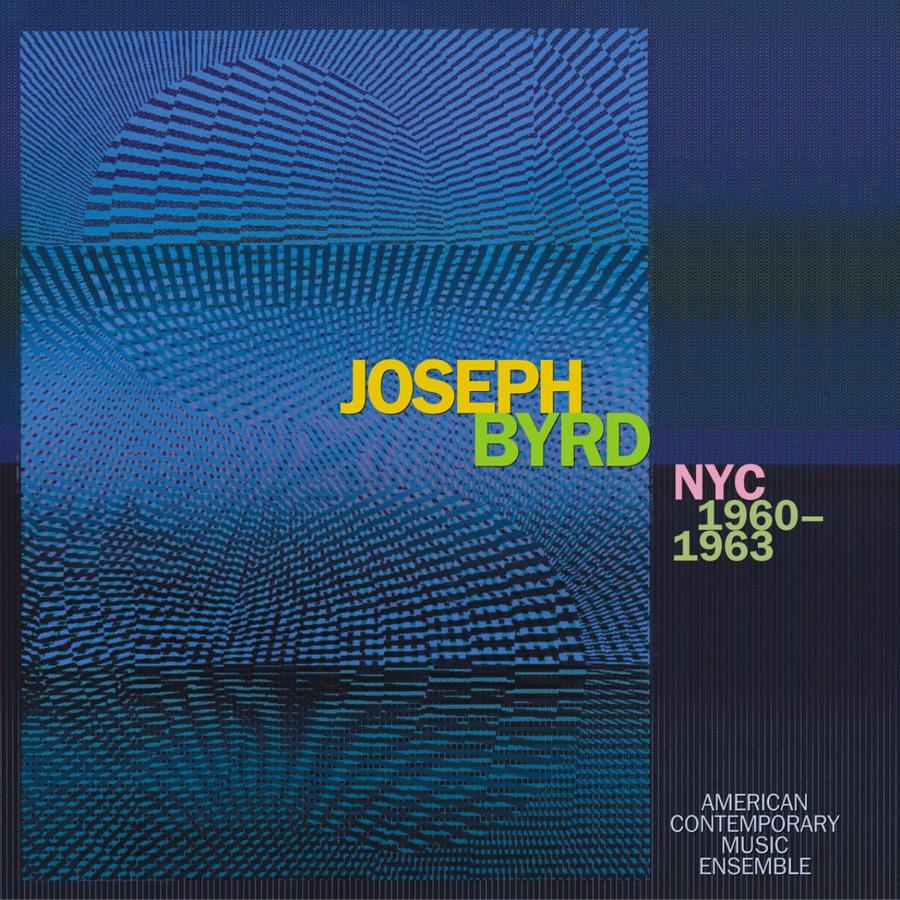
In 1962 Carnegie Hall recital was reviewed in prominent publications including The New York Times. Around this time you also worked as arranger and record producer and as an assistant for composer and music critic Virgil Thomson.
They are in the wrong order. I worked for Thomson from 61-63, but he was asked to supervise a recording of Civil War music (and speeches) and he chose me as arranger for the music because I was knowledgeable about 19th century performance. I did so well I was asked to arrange the Time Life Christmas album, my first chance to work with large ensembles of different kinds. Turns out I had a gift for listening to something and knowing how to replicate it, or at least do a good imitation, in scoring. No one else in my circle could do that, in fact, no one could even write counterpoint – their whole oeuvre was avant-garde. My ability to (and willingness to make money) do that did not make me popular; I was regarded as a sell-out.
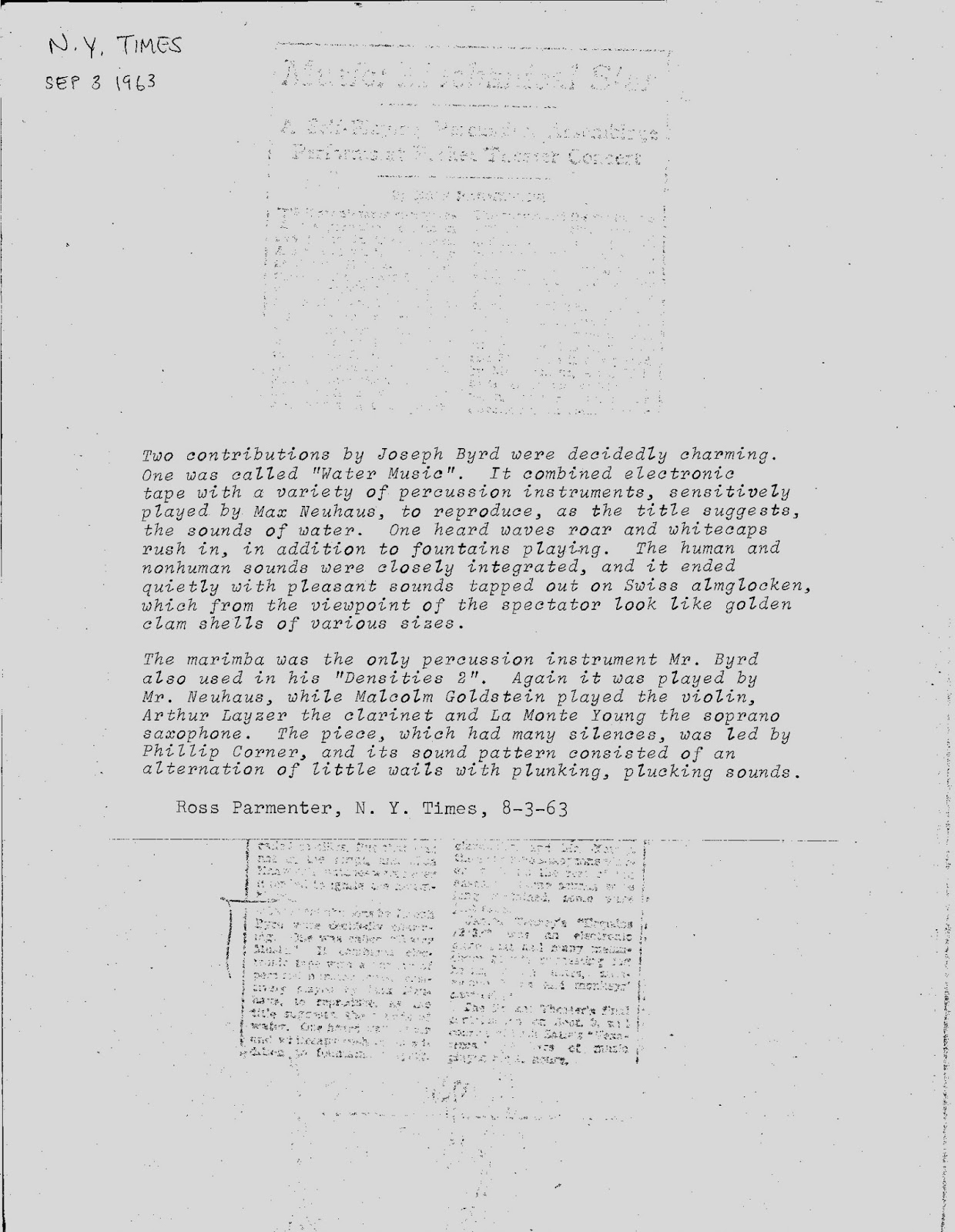
Finally Capitol Records, who had produced the above albums, hired me as a staff arranger and producer. But I found that one had to play politics in the studios, and I wasn’t very good at it. That’s why I decided to get a doctorate – because my Stanford experience had taught me (ha!) that universities were not hotbeds of petty politics! Bad mistake, but without the mistakes I wouldn’t have done what I did.
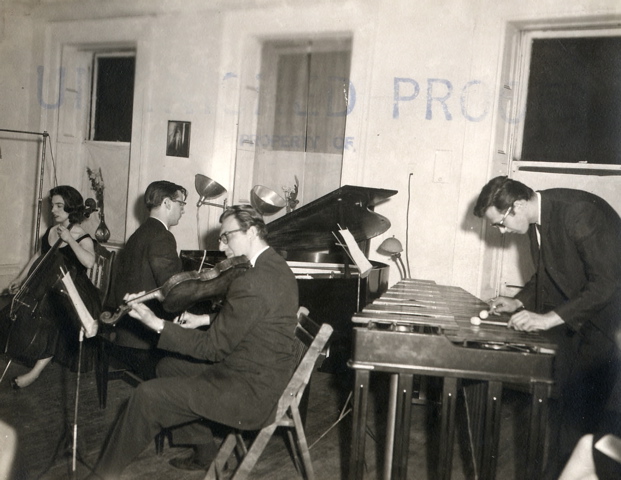
Around 1963 you met Dorothy Moskowitz and both of you went to the West Coast. There you accepted a teaching assistant position at UCLA. Around that time you formed a so-called New Music Workshop with jazz trumpeter Don Ellis and some other musicians. “Performance art” and “concept art” would develop. You left UCLA in 1966 to create music full-time and produce “happenings.” You also met Tom Oberheim, who built ring modulators and other devices for you.
I did several happenings, the most notorious of which was Process, partially funded by Art Kunkin of The LA Free Press. All those activities and others are documented in the second attachment. My own writings are, if not totally coherent, at least typical of where I was heading in those days.
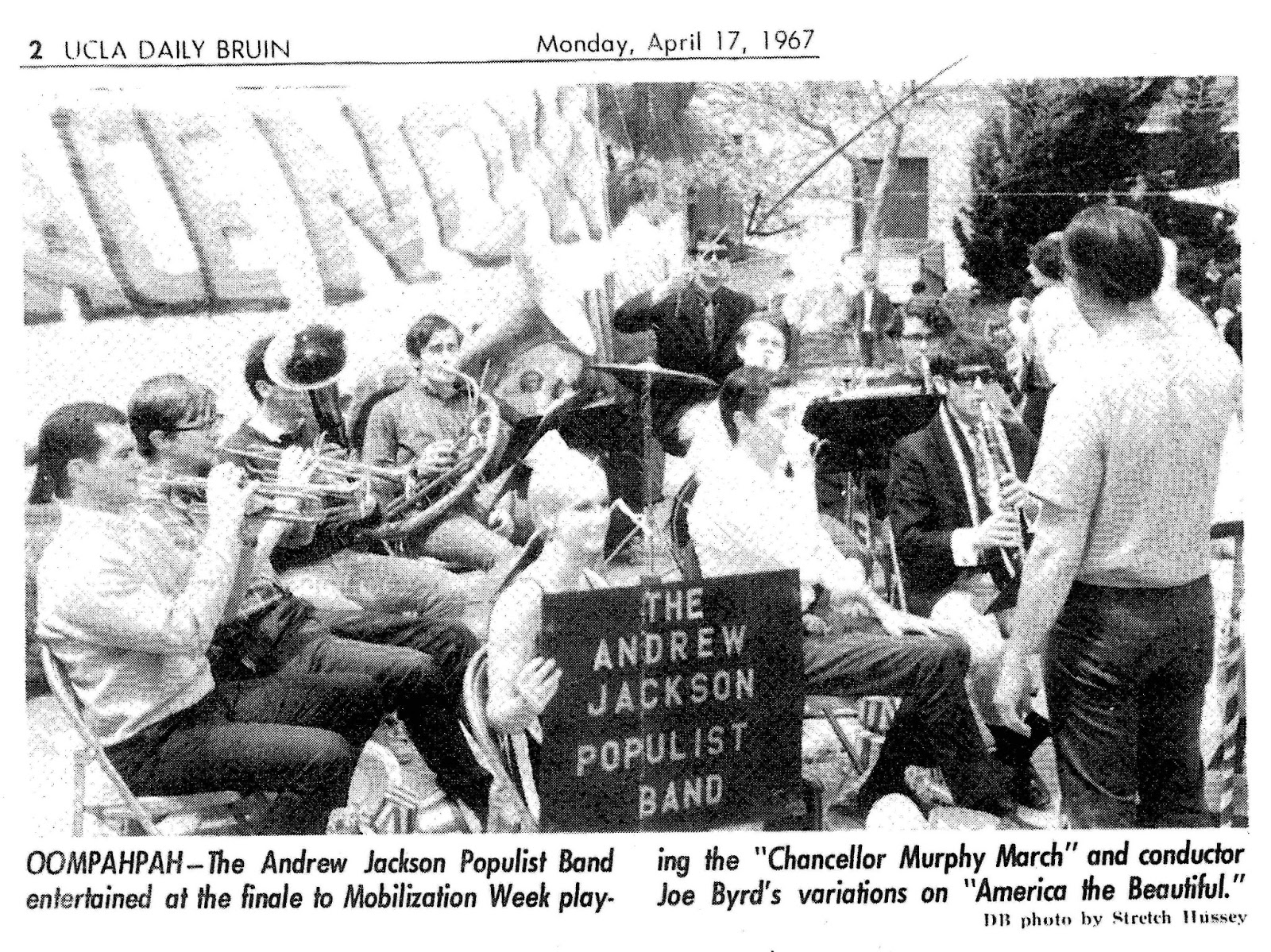
I’d long been a devotee of Charles Ives – indeed I sometimes incorporated old tunes in my music, as he had. The Time-Life project took me away from the avant-garde, and toward a kind of historical perspective that would likewise color my future. And in the course of working on the Civil War albums I met Dorothy Moskowitz, with whom I was to have a profound musical and personal relationship. The Civil War project turned into a job as staff arranger for Capitol Records. I had always been eclectic as a composer; indeed it was a detriment to my finding a single distinctive “voice” in the avant-garde, as I changed styles with almost every piece. But the opportunity to work with a wide range of styles and artists at Capitol was a godsend. I gained fluency in myriad kinds of music, and I became increasingly interested in the music of India and Indonesia. In 1963 I got a teaching assistantship at UCLA, with the intent of getting a Ph.D. in ethnomusicology, and Dorothy and I left for Los Angeles. If I was a tiny fish in the pond of avant-garde New York, I was a pioneer of experimental music in LA. My first year at UCLA I co-founded “The New Music Workshop” with Don Ellis. Don was already a brilliant jazz trumpet player, but at UCLA he studied Indian music, as did Dorothy and I. Don would later use this experience in the additive rhythms and polyrhythmic music he wrote for his big band. In the year we were together, we had concerts of experimental jazz interwoven with music by Charles Ives, Henry Brant, Edgard Varese, Earl Browne, Morton Feldman, and Stockhausen. Dorothy performed John Cage’s Aria hauntingly with a vibrato-less voice she had honed in study with our teacher of South Indian music, Gayathri Rajapur. When Don left the University, I began to take the Workshop in more experimental directions. Increasingly, I was bringing into my own work elements of “happenings,” or what would come to be called “performance art.” So we began to embrace both that and “concept art,” including works by Riley, Young, and the Korean composer Nam June Paik. We began to attract attention outside UCLA, with articles in the Times and various local publications. Without intending to, I became a celebrity. Rumors about my activities circulated, and for years after I was to be amazed at some of the myths (for example, that I had put a live fish inside a piano – a terrific idea, but it never happened). In 1965, with funding from UCLA Associated Students, we did an elaborate set of concerts and events called “The Steamed Spring Vegetable Pie.” (The title was randomly chosen from The Alice B. Toklas Cookbook.) The final concert of that series closed with LaMonte’s piece in which a giant weather balloon is filled on stage (using a vacuum cleaner). This takes about half an hour, and I was concerned that I would lose my unsophisticated audience, so I put together a blues band to play during it. Our singer was my friend Linda Ronstadt, who had just moved to Santa Monica, and was living with her folk trio in a six-block area that included The Doors, Frank Zappa, and Dorothy and me. The realization that rock was an access to a larger public came out of that concert, and the idea of forming a band began taking shape. It had become clear that my musical activities – together with my increasing political radicalism regarding the Vietnam War – meant I was not going to get a Ph.D., and I left UCLA in 1966. But by then the New Music Workshop had taken on a life of its own. I persuaded a young electrical engineer named Tom Oberheim to build a “black box” containing a very primitive set of wave generators (nothing on the order of Robert Moog’s impossibly expensive first synthesizers, then priced close to $20,000), and it was used in a number of happenings and environments, usually being processed through a portable tape-delay machine called an Echoplex.
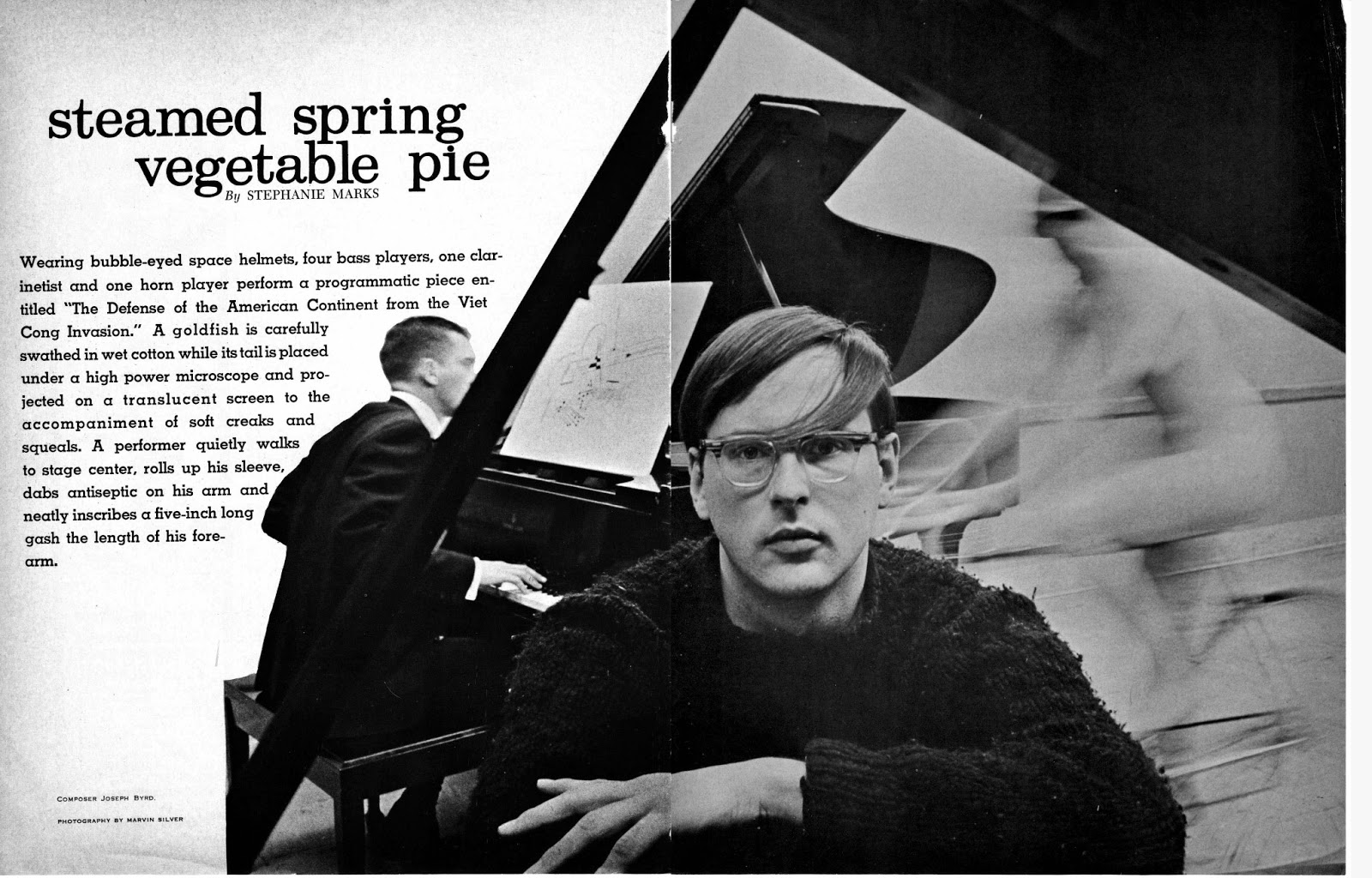
What can you tell me about the formation of The United States of America?
I don’t know why you don’t consider this question answered. For me it was a logical step to seek a bigger audience, to turn art in a more socially radical direction (also to be more honest about sex and gender after the failure of the “Love Generation” the previous year.
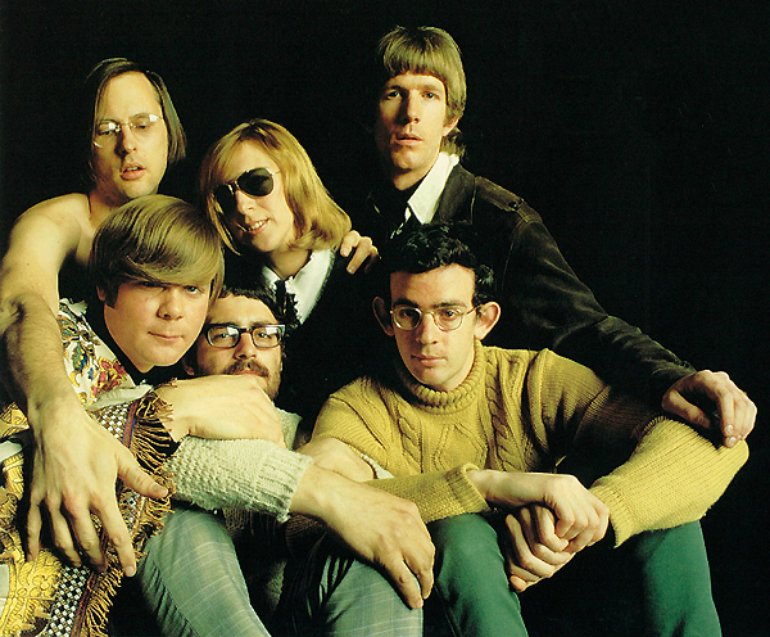
Dorothy and I broke up around that time, and she returned to New York, but we stayed in communication. I taught at the Pasadena Art Museum and at UC Irvine Extension, and tried to continue doing performance art, but money was a constant problem, and events rarely collected much more money than they cost to put on. A constant source of encouragement, however, was the Art Kunkin’s Los Angeles Free Press. In early 1967 I approached Art about fronting me the money to start a band, and I asked Dorothy to return to LA to sing lead. My initial partner in this enterprise was Michael Agnello, a composer and anarchist who had shared some radical political activities with me; he was to play organ and I would play electric harpsichord. But Michael was less interested in creating a music ensemble than in creating The Revolution, and when we had the opportunity to sign with Columbia Records that Fall, he accused me of selling out to the Establishment and quit. The musicians that became The United States of America had been involved in one way or another with avant-garde music and ethnomusicology. I had first met violinist Gordon Marron when I was rehearsing music for an all-Morton Feldman concert; Craig Woodson was an African drum specialist, Rand Forbes was a virtuosic modern-music classic bassist. Dorothy was perhaps the only one who had multiple skills. We were very conscious that we were plunging into rock without any real knowledge of, or experience in, the medium. We had played Cage and Stockhausen, African and Indian music, and I thought we could simply bring all that to rock. But we knew almost nothing about the roots of rock and roll. We all improvised, of course, but in a “contemporary music” style. In retrospect, creating a rock band with no rock musicians was a bad decision on my part. Still, since I considered myself the most eclectic composer on the planet; I was confident that whatever the others couldn’t do I could write. And I had been listening to a lot of music: Country Joe and the Fish, Jefferson Airplane, the Paul Butterfield Blues Band, and the acid power trio Blue Cheer were all useful ingredients. I was certainly aware of the Beatles (probably too much so), and an early fan of the then unknown songwriter Randy Newman. Of course, I was – we all were – conversant with the drug culture, and that played a central role in our music. Things moved fast: I introduced Gordon to the ring modulator, to fatten the violin sound to a Hendrix fuzz; Rand bought an Ampeg fretless bass, and we set about electrifying drums. The aural concept I had in mind was an edgy minimalist one, without the guitar “clutter” I was hearing in many rock bands of the late 60s. I composed about a dozen songs, Dorothy co-writing lyrics. I wrote out parts for everyone, and we rehearsed for a month, made a demo, and sent it to Columbia Records. Our timing was fortuitous. The Monterey Pop Festival had motivated Clive Davis to corner the market in every available niche of rock, and he signed every act he could get his hands on. Taj Mahal, Sly Stone, Janis Joplin, Moby Grape, Laura Nyro, The Chambers Brothers, Janis Ian, Buddy Miles, the list goes on and on. We had a record contract before we played our first gig at The Ash Grove that Fall. The two engagements at The Ash Grove helped define us as a combination of experimental rock and performance art. Everything we did on the album we had performed live, via the addition of 2 tape decks on stage. We traveled with a bunch of gear, including a calliope, a 3′ x 4′ neon American flag (which had alternately flashing red and white stripes), and a full-size plaster nun. We may have been the first to use fog machines: the low-lying fog and the flashing flag created a striking environment. We tended to use low stage lighting when we could, with only a pin spot for the vocalist. And since we often played from written scores, we used stand lights, which also added a kind of other-worldly lit-from-below effect.
You were influenced by Red Krayola. What else influenced you?
I had visited with and listened to rehearsals of the trio at the time I was getting my band together. I loved their Dada approach and envied Mayo’s unflappable and cheerful iconoclasm. If I’d been brave enough, that would have been a direction to emulate. But I was, remember, a Communist, and just as Dada and Communism were incompatible, I knew it was too tough to sell to the public. Mayo didn’t give a shit. My favorite cut from their 1968 album was “Listen to This”, the shortest cut ever recorded. I knew I had to have a marketable product if I wanted to have any influence.BTW that was another issue on which Michael Agnello and I strongly differed. He truly wanted to have a “Digger” band that would live on a commune and begin the revolution through music. However, I don’t remember his being with me when I hung out with Mayo.
You released an album in 1968. How did you get signed to the label?
I mentioned this above. Clive Davis. Plus the fact that we were already locally legendary before we played our first paying gig. I sent a demo (most but not all is on the Sundazed reissue, remastered without my participation), and next thing we heard was they wanted to sign us. I have to say, it was a pretty fucking brilliant demo. Better in some ways than what I had to compromise with David Rubinson on. But only songs, none of the collage/electronics/sound manipulated things that are on the album.
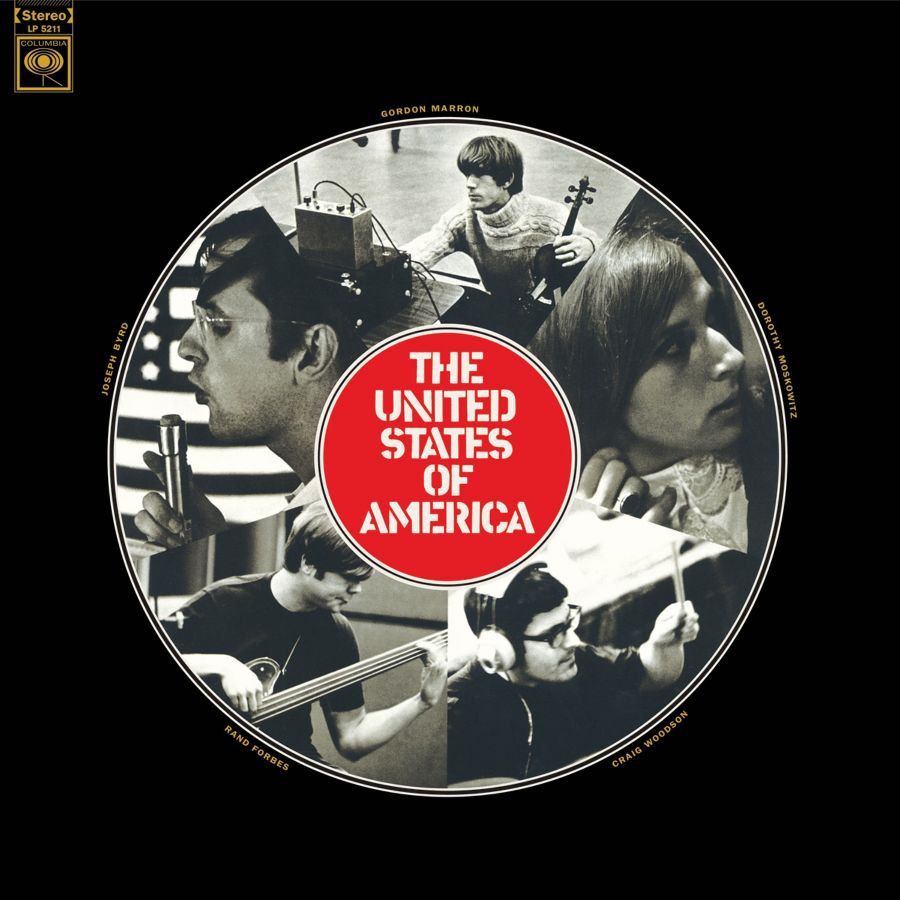
Anyway, they sent a lawyer, and he, Malcolm, and I met at our lawyer’s office (Larry Steinberg). On a hunch, I wore a black suit and Roman collar. I looked like a young radical priest. The guy kept looking at me, I think, wondering if I really was a cleric. And I played a really good role. “I’m sorry, an advance of $20,000 won’t pay for the equipment we need. And it’s going to be a while before we can make an LP and go on the road. What are these musicians supposed to live on?” We ended up with $35K. I paid each member a small salary over that fall, don’t remember what it was, and we got a lot of work done. We got costumes, bought equipment, rented an industrial space in Venice, and actually did some good work.
What are some of the strongest memories from producing and releasing your LP?
That’s way too much stuff to try to recall here. It wasn’t exactly fun, because Rubinson was on a power trip. He was a neophyte producer, insecure, hence insistent on making changes and “producing”…plus he and Dorothy seem to have had a separate agenda going on (again, my innocence about reuniting her with a former lover, although they almost certainly didn’t have a relationship during that period, as she had a very clingy and controlling boyfriend who wouldn’t let her out of his sight…he even waited in an adjacent room while we worked on songs together).
I guess this is a sore point, but it’s clear that early on David and Dorothy decided that she was the critical member of the band, the Janice to our Big Brother, as it were. I have only one hard piece of evidence to that effect, but if you check the Sundazed release it has a version of “I Won’t Leave My Wooden Wife For You” with the same instrumental backing, only sung by Dorothy, with some lyric changes. That was the one song I had written for my own limited vocal skills.
There was no reason for her to have recorded that vocal, and it was done without my knowledge. (Ironically, she made a great change in the lyric, viz., “…and what would happen to the payments on the pool?”, which if she’d shared with me, would have been an improvement on my kind of lame “I just couldn’t stand it when you came home late from school”)
That tells me that there was some intent for her to take over the band, even during the original sessions for the album. There’s simply no other reason for that ever to have been recorded.
The other major problem was the addition of Ed Bogas to the band, at least informally. Ed was an excellent musician, but he was Gordon’s pal and co-writer, and there was resentment that only two of their songs were on the album. Gordon formed a kind of mini-clique with Rand (they were both classical contemporary performers), and rather than a free-flowing creative endeavor, the album involved a lot of my having to placate them. Ed, whatever his talents, was resistant to anything I did. That meant that even during the recording sessions, I was in a bind, trying to keep my vision while compromising to keep the band together. “Stranded In Time”, for example, is a weak Beatle-esque copy of “Eleanor Rigby”, and could not be performed live because it called for a string quartet. That, incidentally, is the only tune on the album I didn’t arrange. It should never have been included, but Dave Rubinson loved it. Which in turn shows you that he had no clue about my concept.
What kind of equipment did you use?
We ended up with a bank of Acoustic amp/speakers. I had an electric harpsichord (great with fuzz and distortion) and a Farfisa organ (useless except as a pad). We had a synthesizer like the one I’d commissioned from Tom Oberheim (the beginning of his business career), made by Richard Durrette, and similarly pretty random in terms of controls. What made it work was an Echo-Plex, which gave tape delay. We also bought two eight-track decks, on which I recorded the electronics from the recording session. So we were able to replicate everything live. We played with other stuff, contact mics, etc., but the state of technology meant that the more stuff you had, the more opportunities for broken cables and performance disasters.
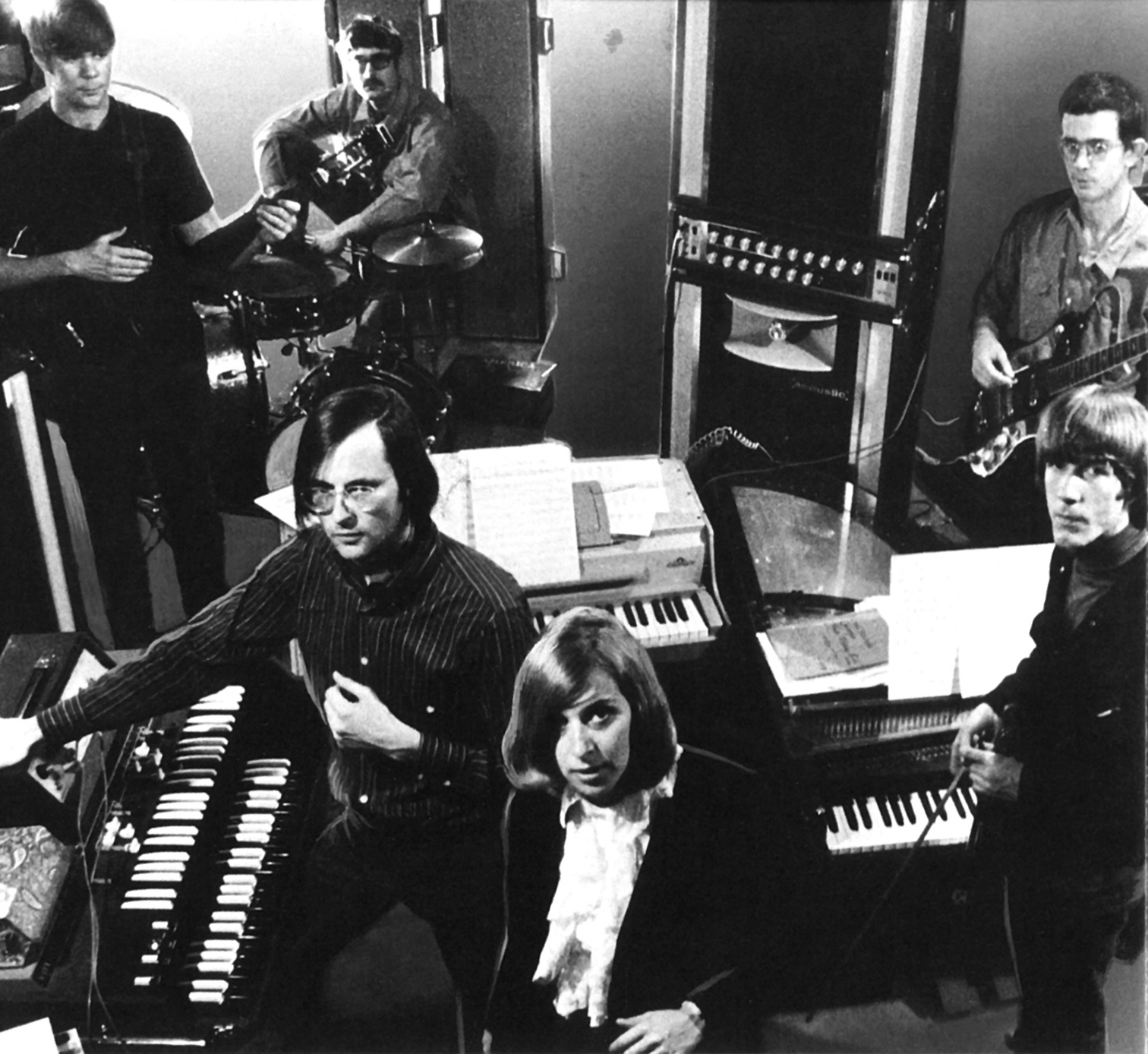
What can you tell about the envelope artwork?
The cover that is shown everywhere wasn’t the cover; it was an inside insert, which I wanted to be simple b/w text and photos, but Columbia insisted on doing what they did. My cover was a manila envelope with stencil letters.
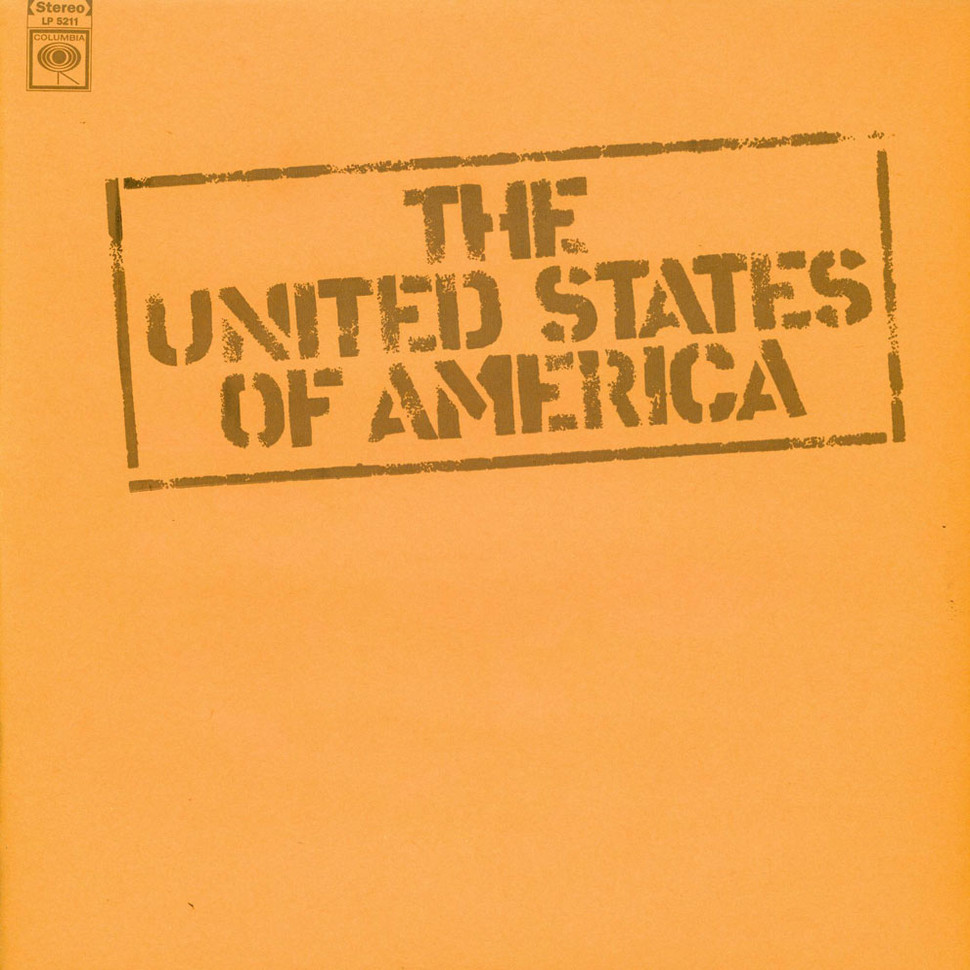
A note about the cover. The original plan was for there not to be a true cover, only a plain cardboard sleeve inside a heavy manila envelope, Which was – in “Cargo” font – stenciled with the name of the band — nothing else. This was well-received by the art department, who turned out a classic. It helps if you recall that this was the era of highly “art directed” LP art. Remember the flying elephants? Now tell me what the band was called.
But neither they nor we had reckoned with the Columbia executives, who insisted there could not be a blank cardboard sleeve. There had to be someplace to put photos and credits, and they wouldn’t hear of putting them on an insert or booklet. So, while agreeing to the manila envelope idea, they additionally put out a 2-color cardboard sleeve. As a result, it gave the impression that the outer envelope was just a promotion. In most instances, when retailers received the LPs they tore off the envelope, and put the sleeve in the bins. There are very few of the original envelopes left. They look pretty cool.
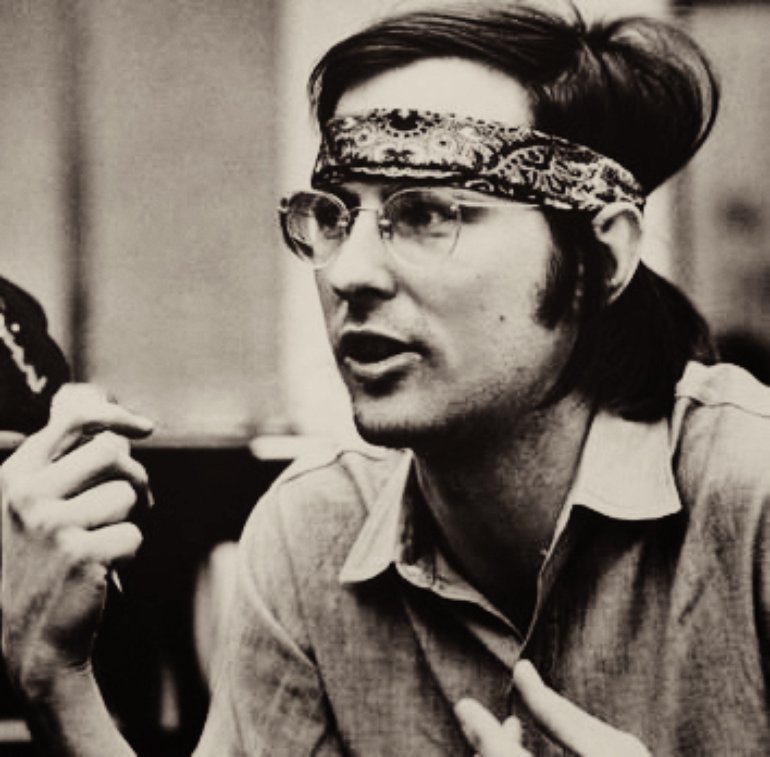
You only did one tour of the U.S. East Coast, followed by a number of performances in the Southwest U.S., with The Troggs, Velvet Underground and at Bill Graham’s Fillmore East.
Audiences generally were positive, sort of…it was a new kind of experience, and it wasn’t just the music, it was performance art.
I don’t know what you mean by “Southwest US” as we only played Arizona State and one gig at an Orange County club where three members got busted for going out during the break and smoking pot. This was a big problem with the band, because while I had no moral or other reasons for not getting high, we were too highly tuned to get by with sloppy performances. Gordon was the main offender – he was always stoned – but Rand and Craig were often sloppy in performance. Dorothy, never.
Of our live appearances, Boston was one experience I remember with fondness. The crowd was hip, and the album had had good initial local sales. Many in the audience actually knew the songs. When Dorothy sang Love Song for the Dead Che, I was amazed to hear them singing along! That was of course my own personal favorite, and it still thrills me to remember the feeling of hundreds of people singing my music.
What about Joe Byrd and The Field Hippies?
There was one guy at Columbia who thought I was a genius, John McClure, the head of the Masterworks division (classical). When Columbia dumped me from the band, he offered me a chance to make a second album. There were catches, though. He wanted it done in 2 months. I had only one song unrecorded by the US of A, “You Can’t Ever Come Down”, and I had to write an entire album and produce it in a few weeks. We were not liked by Columbia and could not get recording time except after 11PM, so all the musicians cost double the scale and the studio was 3 times the cost of daytime. It was a really chaotic time. I remember lots from this period, but frantic is the biggest thing. The songs had to be churned out, and ultimately there was not enough material, which is why the Gospel Music was recorded, essentially improvised, with my writing four trombones to finish it out. The actual song is the closing of side one of US of A, a little Salvation Army band hymn that I thought was original until I found it in a Methodist hymnal several years later. But if you have only the CD of US of A, you don’t get the hymn, as with all the little electronic inserts I put in between songs.
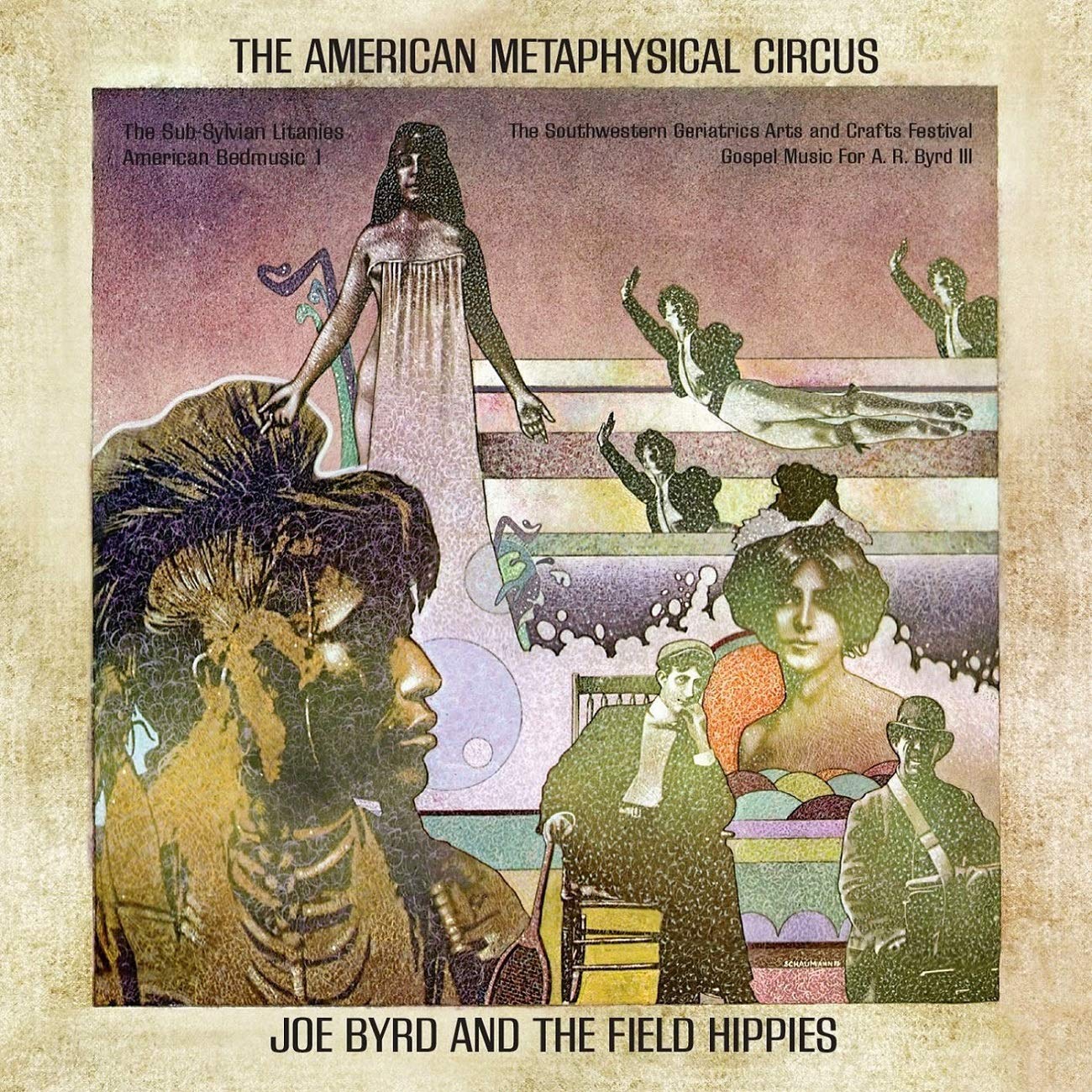
Would you share your insight on the albums’ tracks?
I really don’t see how I can do this. It would take weeks. I can tell you that Cloud Song was my first song ever (it’s in 7, but doesn’t sound like it, something I disliked about Don Ellis’s multimetric works, which were insanely difficult for musicians, at least at first. I recall a UCLA concert by his big band, and it sounded like everyone was just struggling to read the music, only Don being capable of soloing in, say, 17/8. Later, as he got a contract and attracted better musicians, that changed). I wrote Love Song myself, but then Dorothy arrived and I got her to help with all the second verse lyrics. (Where Is Yesterday is my arrangement of Gordon’s song, and Stranded In Time is his arrangement of his own song.)
Who actually were Field of Hippies?
I didn’t name the album; Columbia decided that no rock musician could be called Joseph, and told me they were going to call it Joe Byrd and…. The musicians had been close during the traumatic sessions, and Ted Greene, pointing out that we were really not city hippies, called us The Field Hippies, so I used that name. By then I was exhausted fighting for stuff. The cover was chosen by Masterworks after I’d submitted some interesting photos (see attached) which they rejected. My suggestion for the title was “Joseph Byrd – Gifts and Creatures”.
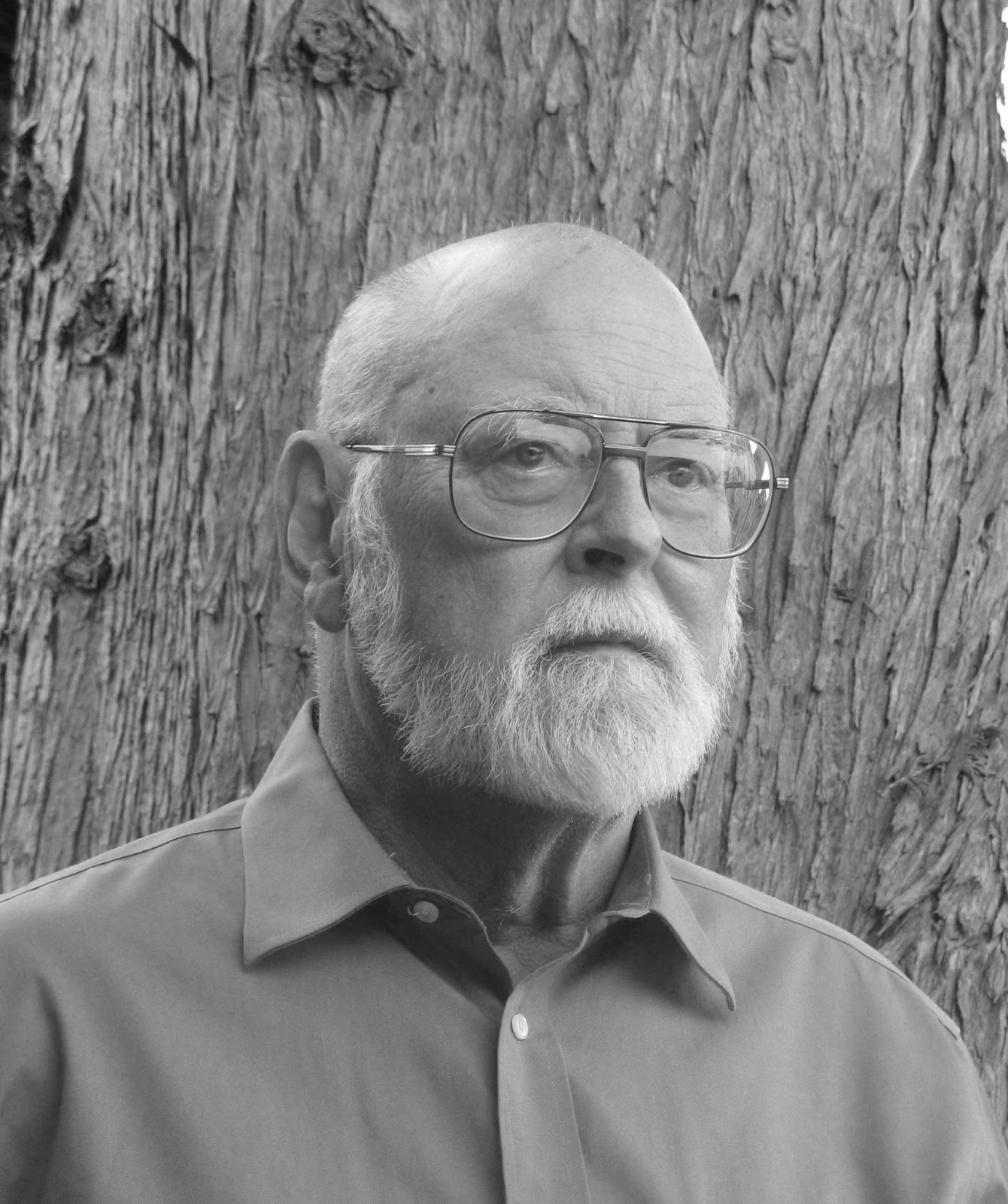
Thank you for taking your time. Last word is yours.
I would say that originality thrives best when it’s built on a firm grasp of the basics. Don’t try to break the rules before you learn the rules. Like clichés and prejudices, they have a grain of truth in them. Rules are really useful to know, but blindly following them is not useful. So study them. Then gradually let your creativity rise above them, and you may surprise yourself. Joseph Byrd
Klemen Breznikar
New World Records Official Website
All photo materials are copyrighted by their respective copyright owners, and are subject to use for INFORMATIONAL PURPOSES ONLY!

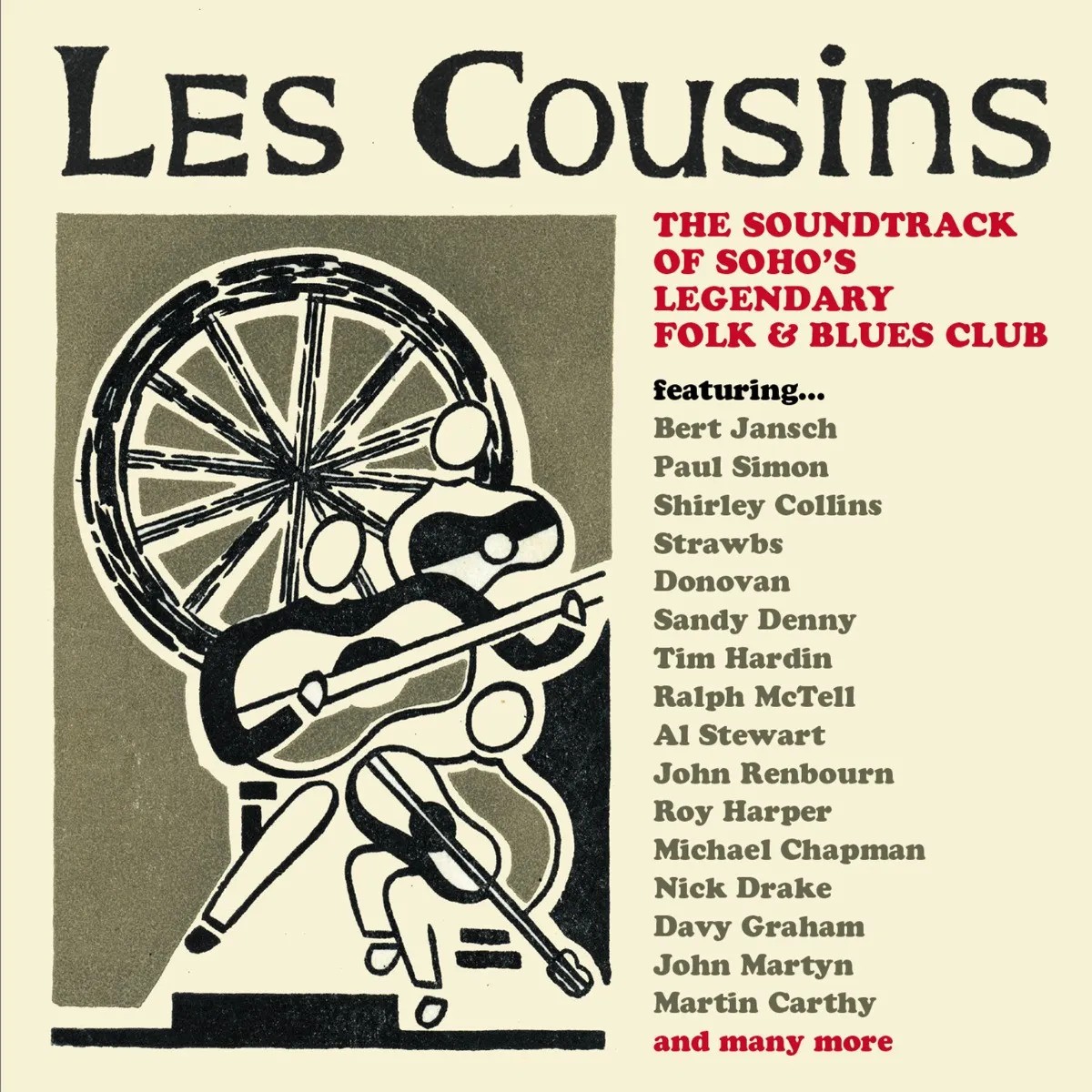
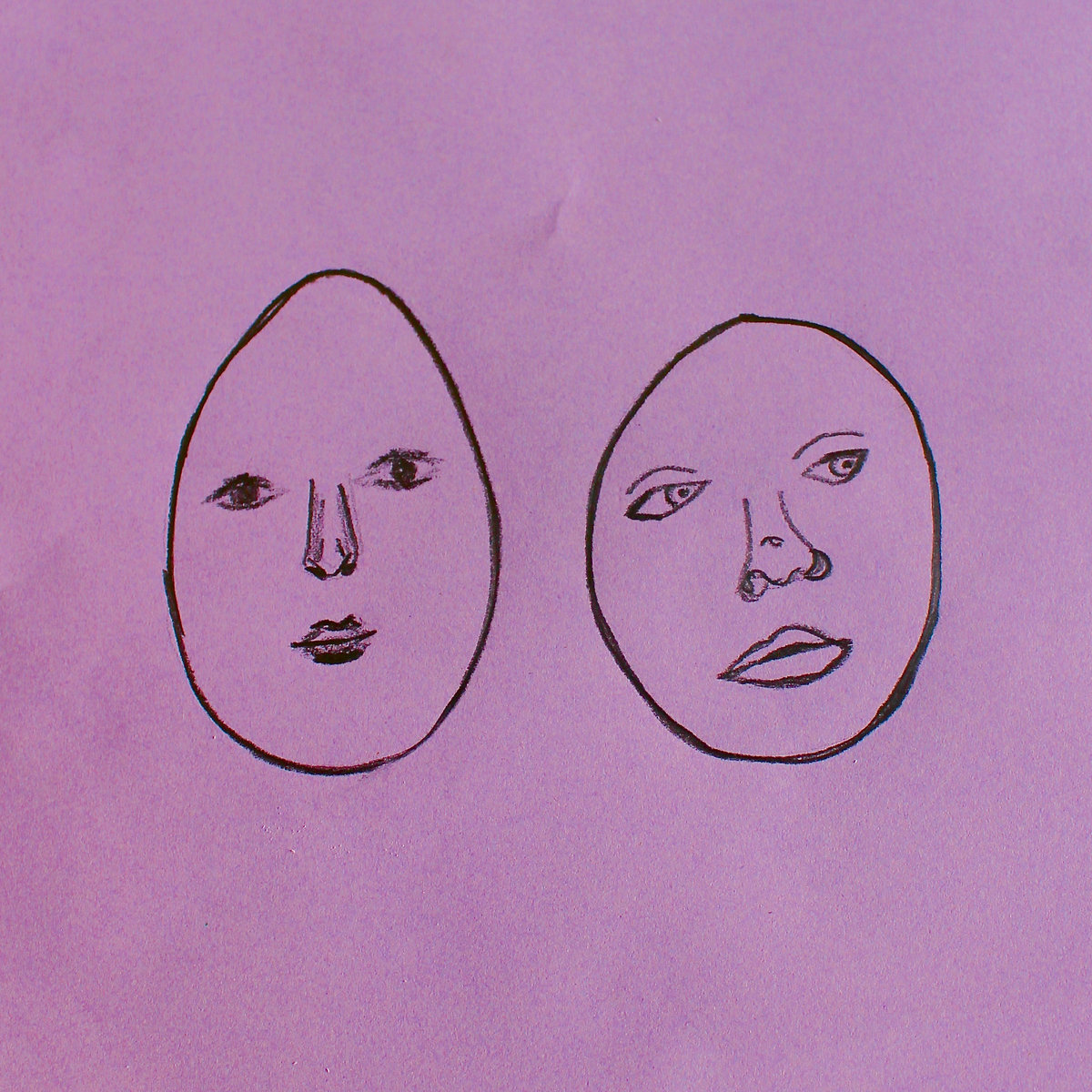
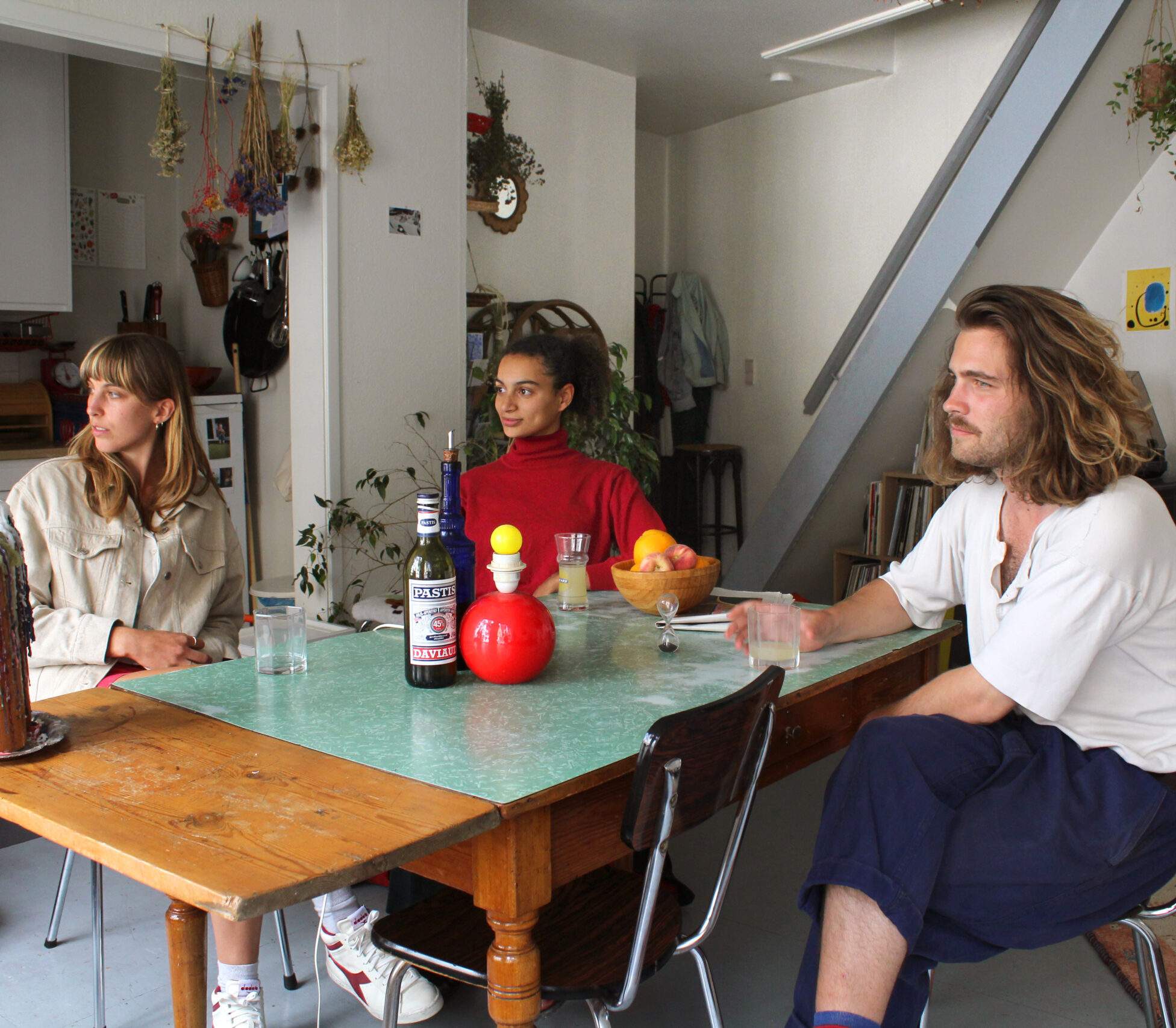
WOW, Awesome interview. He sure is not at a loss for words and quite snooty at that! But a true legend and an excellent group he did have. I only wish there would have been more from The USA. As young as I was when I first bought the lp in 69 (14 yrs old) I believe It really hit me hard and I knew it was special.
Thanks so much.
At the Steamed Spring Vegetable Pie concert there was a piece (first on the program I recall) that included a dixieland band. Joseph was scrupulous about following union rules and since there was no money for a separate rehearsal we were to run the piece down just before the concert. There was a missed communication and I arrived with a tenor saxophone instead of the alto for which he had written. In the midst of a lot of last-minute preparations he turned the music over and without looking at the alto part wrote out an exact transposition–exact down to the last dynamic marking–for tenor.
USA one of my favourite psychedelic albums, field hippies good too, You can't ever come down lyrics excellent.
It's great you interviewed Byrd for the site, Klemen. USA's one of the best groups and it's good to get more info on them with this interview. Byrd comes across as a bit touchy and a li'l full of himself, not to mention lifting a lot of the replies in this interview from the 2004 reissue of the USA album, but it's a fine interview nonetheless.
wonderful interview, thanks! love USA